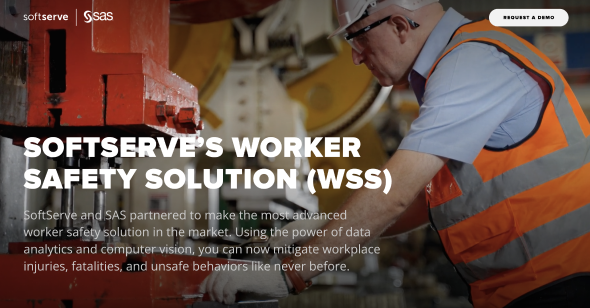Mastering Manufacturing Worker Safety With Analytics and Computer Vision
U.S. businesses spend more than $1 billion per week on workplace injuries, for a staggering total of more than $58 billion per year. That’s a tough pill to swallow — even more so when we realize these costs stem almost entirely from just 10 common workplace injuries.
Shifting from reactive to proactive safety management — powered by data analytics and computer vision — can dramatically reduce the financial burden of workplace incidents. By transforming data into actionable insights, manufacturers can lower costs, streamline operations, and gain a strategic competitive advantage. It’s about moving beyond just managing incidents to preventing them, positioning your organization as a leader in worker safety and innovation.
According to the National Safety Council, 65.2 million workdays were lost in 2021 due to injuries. The top three causes of the most disabling workplace injuries are:
- Overexertion and bodily reaction (22.4% of injuries)
- Falls, slips, and trips (18% of injuries)
- Contact with objects and equipment (17.7% of injuries)
- Many of these injuries could be prevented with the right safety measures in place.
With numbers like these, it’s clear that relying on reactive safety measures is not enough. Technology-driven solutions such as computer vision, AI, and advanced data analytics can help organizations shift from reactive to proactive safety management.

How safety managers can turn proactive safety into tangible results
Safety managers are on the front lines of creating secure work environments through proactive measures and constant vigilance. Their daily routines involve reinforcing safety protocols, monitoring equipment integrity, ensuring transparent documentation, and overseeing comprehensive training sessions.
We’ve seen scenarios where these proactive strategies resulted in significant, measurable improvements for our clients:
Reduction in Incidents: Proactively addressing potential hazards can prevent half of all incidents from turning near misses into non-events.
Fewer Reportable Accidents: Fewer incidents naturally translate into a 20% reduction in reportable accidents, easing the burden on safety reporting and compliance.
Lower Insurance Premiums: A proven track record of safety can lead to a 20% decrease in workers’ compensation insurance premiums.
Decrease in Equipment Maintenance Costs: With better monitoring and early detection of risks, equipment maintenance costs could be reduced by 5%.
By transforming these proactive measures into actionable insights, safety managers not only reduce the financial burden of workplace incidents but also streamline operations and enhance their organization’s competitive advantage.

The road from reactive to proactive with data and computer vision
Leverage camera vision, sensors, and geofencing to capture unsafe behaviours.
Change behaviours in real time to prevent accidents.
Augmented safety briefs, savety protocols, and training based on historical patterns.
Comply with Pll regulations via secured environments and proper protocols.
Going from reactive to proactive safety management reaches its full potential with the right technology. SoftServe’s Worker Safety Solution is an analytics-driven platform powered by SAS AIoT that uses cameras, sensors, and geofencing to address unsafe behaviors in industrial settings and prevent them from occurring in the future.
With a scalable architecture that can be applied across various facilities and use cases, this solution offers end-to-end deployment. Whether you're using existing infrastructure or introducing new cameras, sensors, and hardware, the Worker Safety Solution seamlessly adapts to your needs. Additionally, it offers flexibility in data storage, allowing you to choose between cloud or on-premises options.
By implementing this advanced solution, you not only enhance workplace safety but also streamline operations, reduce costs, and position your organization as a leader in safety innovation.



